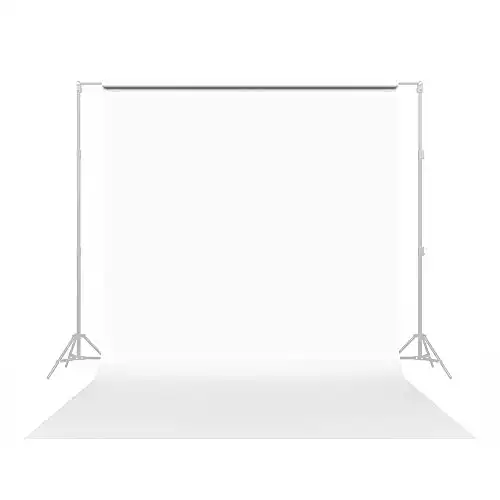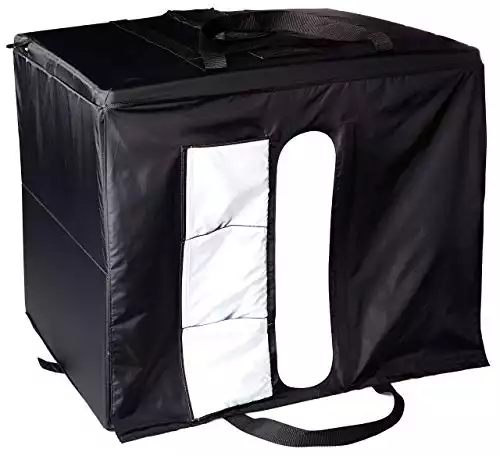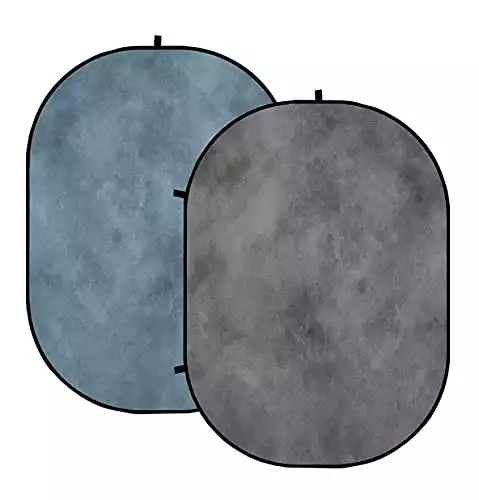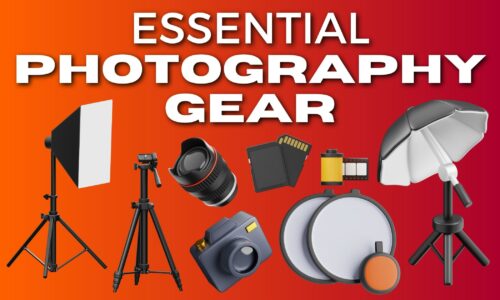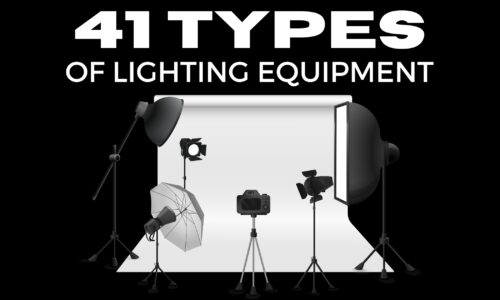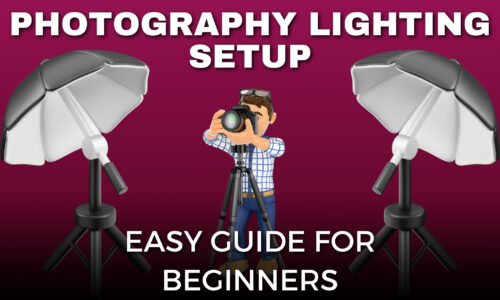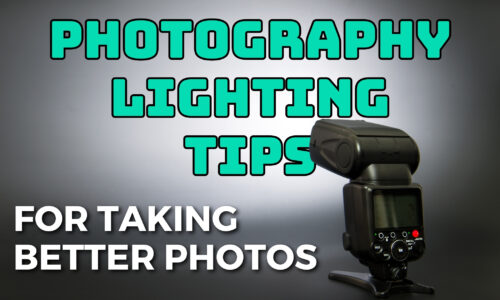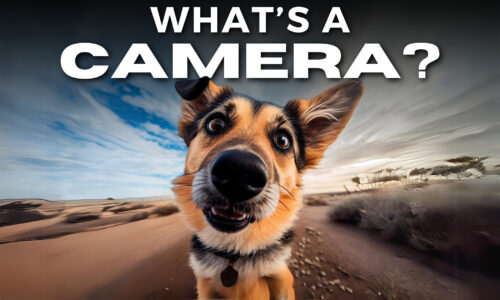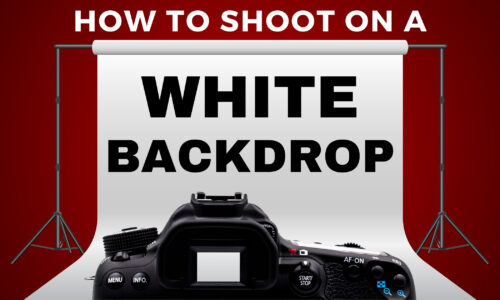The Complete Guide to Photography Backdrops
Photography backdrops are used to achieve professional-looking images. They provide a clean and consistent background for taking photos.
Backgrounds also come in various materials, colors, and patterns.
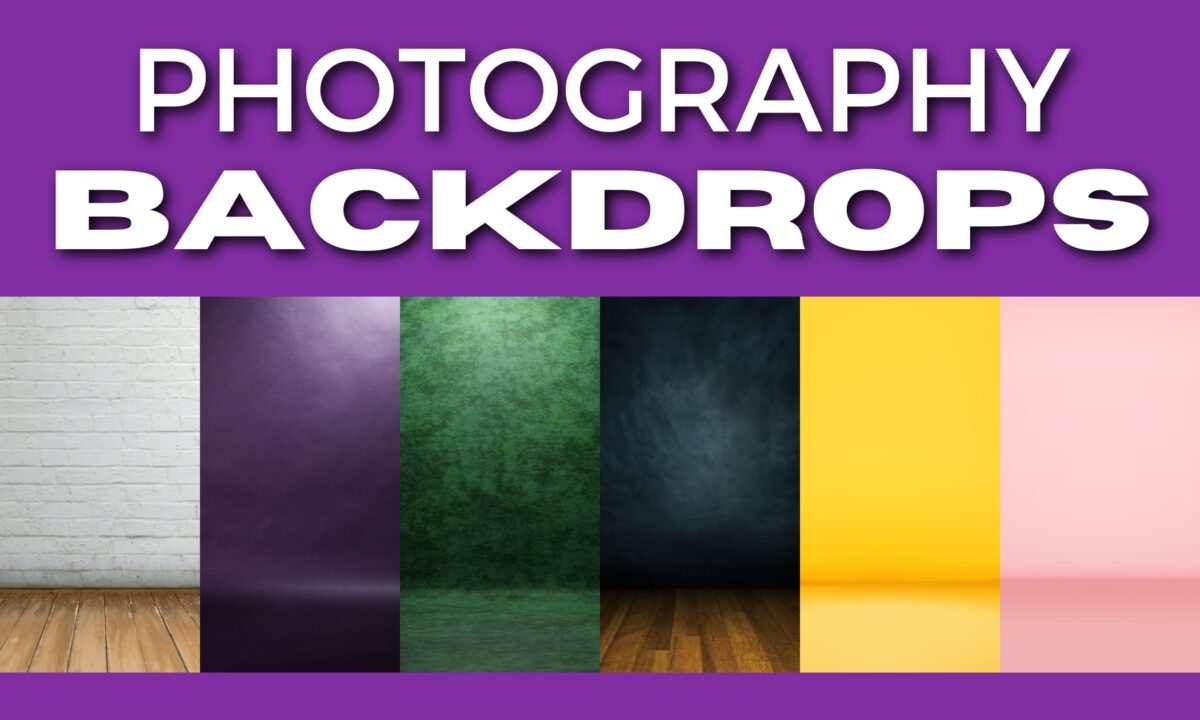
This allows you to experiment and create diverse visual effects.
Photographers can enhance their photos’ overall quality and mood by selecting the right backdrop for their photography sessions. To set up a photo backdrop, you’ll need a reliable stand to keep the background in place and stretched throughout the shoot.
Backdrop stands come in different sizes and designs. They’re built to accommodate any backdrop you use, whether it’s seamless paper, muslin, or vinyl.
As a photographer, you also have the option to use clamps or clips to secure the backdrop firmly to the stand.
When choosing a background, keep the subject and purpose of your shoot in mind.
For instance, solid colors work well for portrait sessions, while patterned or textured backdrops may suit commercial or creative projects. You can even explore collapsible backdrops or chroma key backgrounds for versatility and convenience while working in different shooting environments.
Defining a Photography Backdrop
A photography backdrop is a background placed behind the subject of your photograph.
It’s the canvas on which you paint your picture or tell your story. A well-selected backdrop sets the scene, provides context, and creates your image’s desired mood or atmosphere.
Various materials, styles, and sizes are available for photography backdrops.
You can choose from solid colors, patterned designs, or digitally printed backdrops to get the look you want.
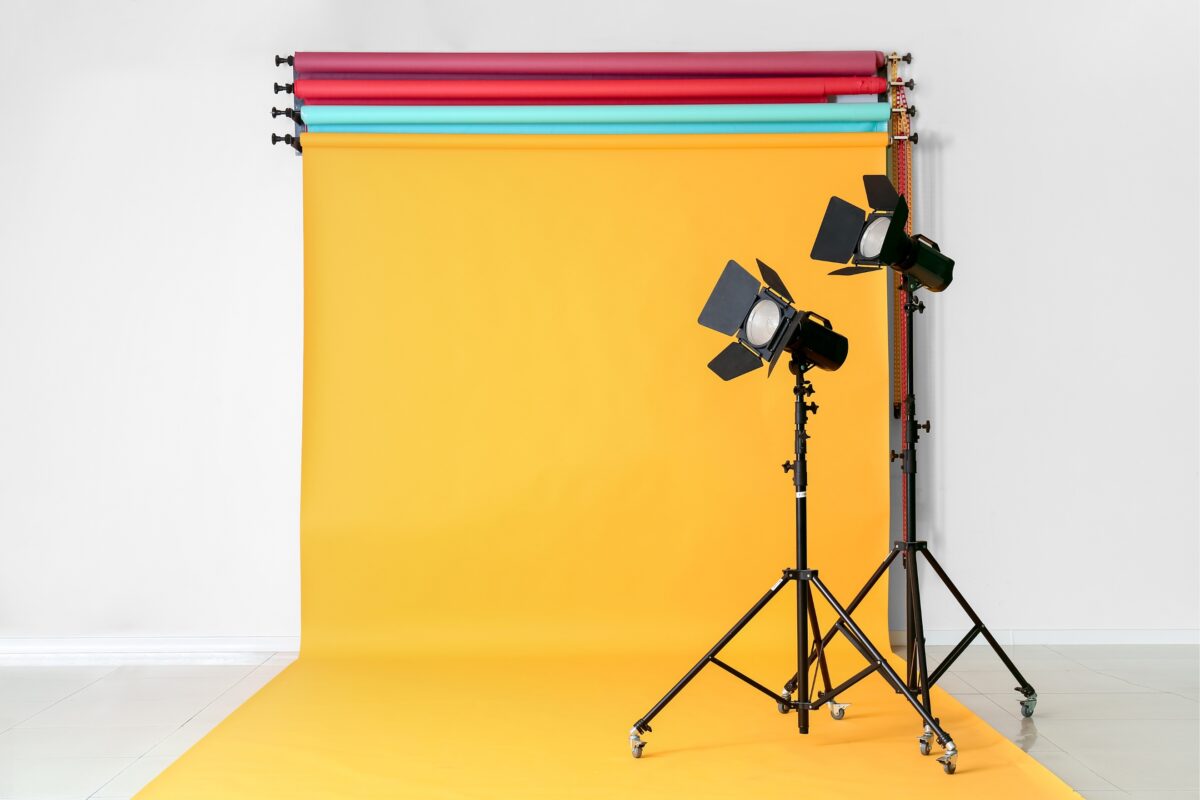
Paper, vinyl, muslin, and canvas are common backdrop options.
When selecting a backdrop, consider the mood and story you want to portray in your photograph. As mentioned, solid color backdrops are great for clean, sleek headshots and can easily add color or dimension to your shot. Patterned or textured backdrops can contribute to setting a specific scene or create a more engaging visual experience.
Choose a backdrop that complements your subject, is important, and doesn’t distract from it.
For example, a busy pattern might not work well for a portrait, where the focus should be on the person’s face. But, the same pattern might be perfect for a product shoot, where the background adds visual interest to the image.
Finally, when using a backdrop, you need proper lighting to avoid unwanted shadows or uneven illumination. Proper lighting can also significantly enhance your photos’ overall appearance and quality.
4 Reasons Why Your Photography Backdrop Matters
Photography backdrops matter because they’re needed to create visually appealing and professional-looking photos. A smooth, uniform background eliminates distractions and brings the viewer’s focus to the subject. Also, quality backdrops:
Enhances The Scene: When the background in your studio or location is unexciting or cluttered, a well-chosen backdrop adds interest, context, and mood to your photographs. This can help transform an average picture into a stunning, eye-catching photo.
Creates Continuity: If you’re working on a series of photos, using a consistent backdrop ensures your subjects are shown uniformly throughout the project. This is helpful in commercial photography because you want to maintain a coherent visual narrative.
They’re Versatile: Backdrops come in various materials, textures, and colors. You create the desired atmosphere by selecting the right one for your photo session. From elegant and sophisticated to fun and playful, you have unlimited options. Some popular backdrop choices include printed backdrops, which add style and depth to your shots, or seamless paper backdrops that provide a clean, minimalistic look.
Backdrops Offer Portability, Value, and Convenience: Several backgrounds are portable and easy to set up, making them a practical solution for studio and on-location photoshoots. You even have compact backdrops, giving you multiple options for projects and client needs.
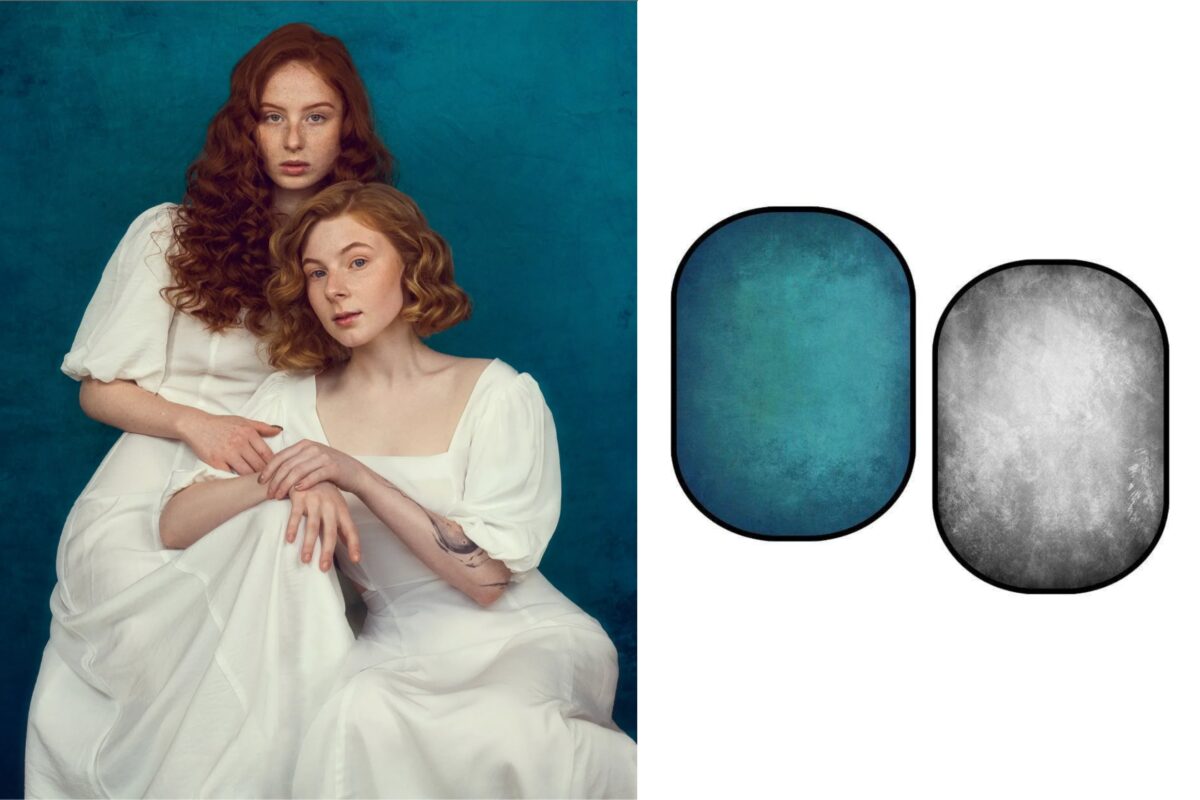
What are the Best Photo Backdrops?
There are several excellent photography backdrop providers you can choose from. Each offers unique benefits, depending on your specific needs.
But, the best photography backdrops for you would depend on your specific requirements and the style of photos you aim to capture.
Here are a few that I recommend:
Savage Seamless Backdrop Paper is a top pick due to its versatility and ease of use. They’re available in a wide range of colors.
And you can easily customize your photos by simply changing the background color.
The seamless design helps create a clean, professional look, and the paper material is easy to transport, store, and recycle.
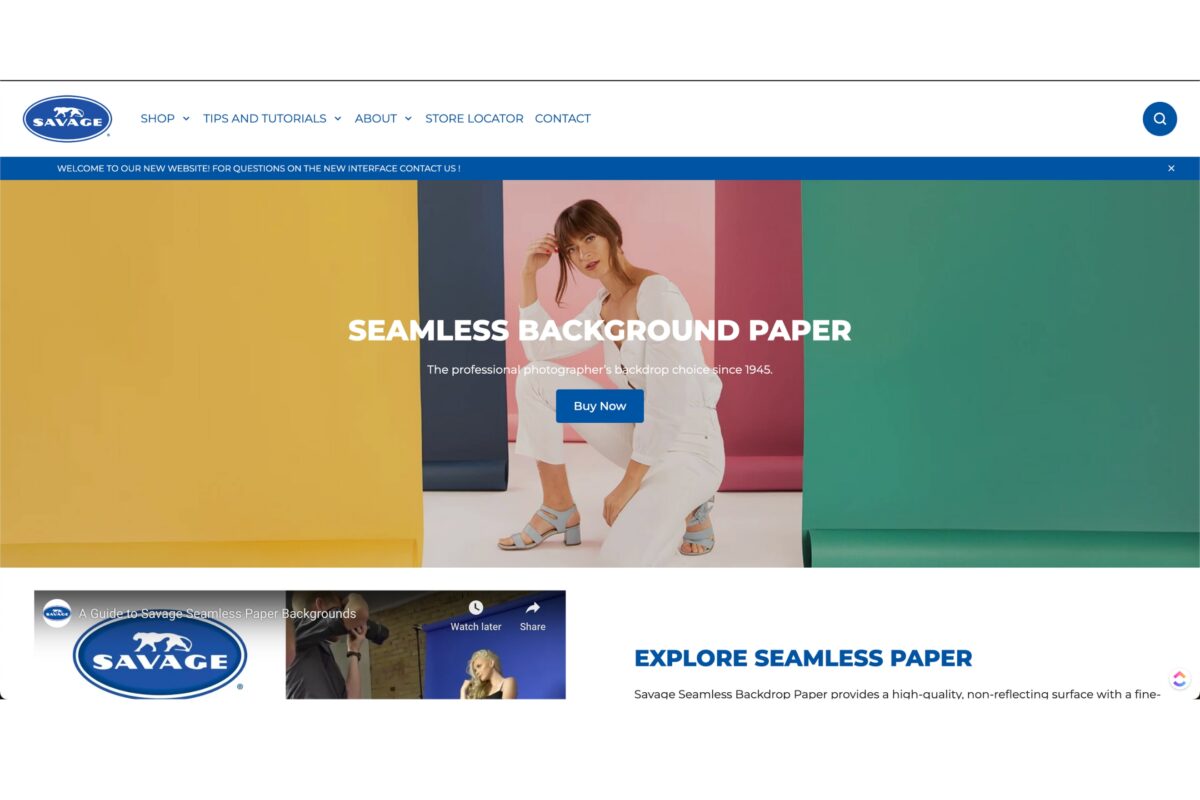
If portability is your priority, consider the Manfrotto EzyFrame Vintage Background Kit. This high-end portable backdrop features a 6.5×7.5′ vintage-inspired concrete pattern that adds an interesting textural element to your photos. The foldable aluminum frame provides easy setup and transport, making it an excellent option for on-location shoots.
The Amazon Basics Portable Foldable Photo Studio Box is an exceptional choice for product shoots. This compact studio box has an integrated LED light source and a seamless, white background perfectly suited for taking product shots. Plus, the foldable design makes it easy to carry and set up quickly if you need to.
Another portable option is the Kate Collapsible Backdrop Pop-up. This foldable backdrop is good for setting up anywhere and has a dual-sided design, offering two backgrounds in one. Its compact nature makes it perfect for photographers on the go who need a quick and straightforward backdrop solution.
When shopping for the perfect backdrop, consider size, price, texture, and ease of use.
Backdrop Material Options
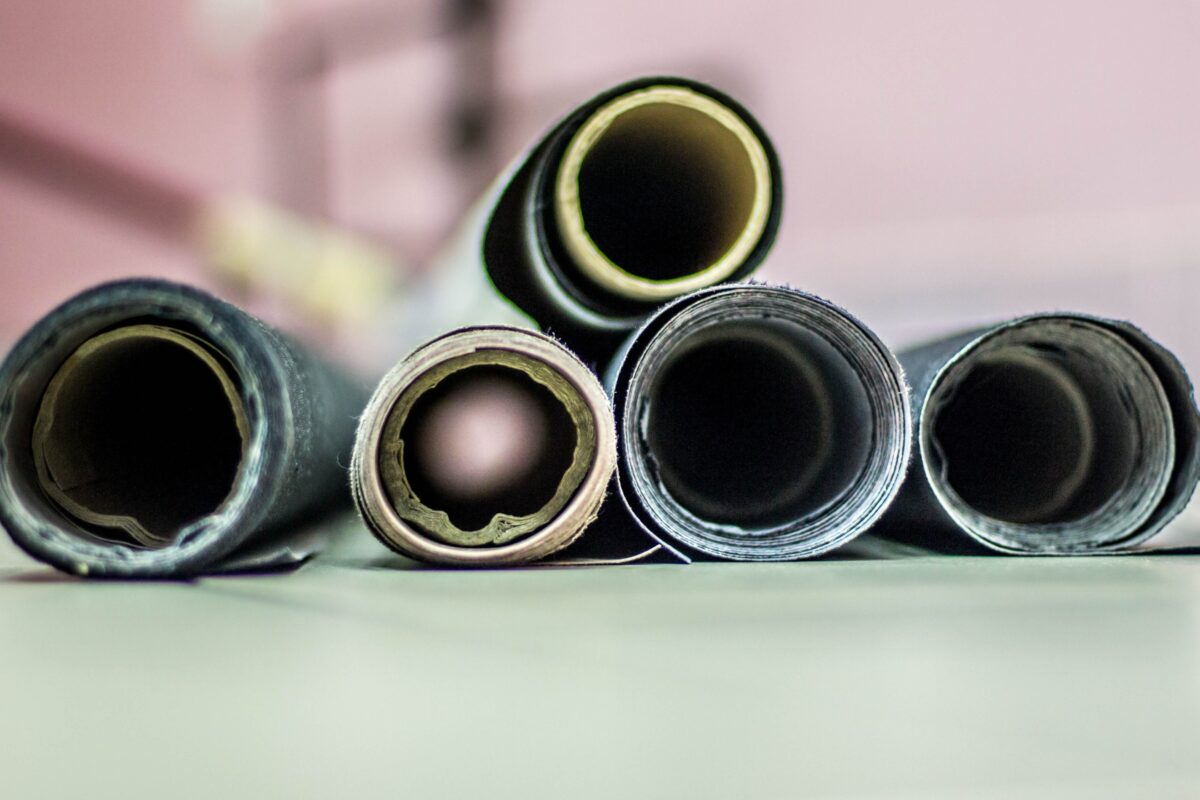
Vinyl Backdrops
Vinyl backdrops are popular with photographers because of their durability and ease of use.
These backdrops are normally made from a high-quality material, making them resistant to tearing and moisture.
They are easily cleaned and available in various designs and colors. And unlike other backdrops, vinyl has a slight sheen to its surface. This gives your photographs a professional look.
However, vinyl backdrops can sometimes have creases and wrinkles after storage. So make sure you carefully store them.
Paper Backdrops
Paper backdrops or seamless paper offers photographers a cost-effective and disposable option. It’s also what we use most in our photography studio here in Connecticut.
Available in various colors and sizes, these backdrops give your photos a clean, uniform background. They’re also easy to set up, transport, and store. Plus, paper backdrops are excellent for creating composite pictures, as they can easily be cut and edited in post-processing.
Just remember, paper backdrops aren’t as durable as other materials and may need frequent replacement.
Canvas Backdrops
Canvas backdrops provide a classic and professional appearance for your photographs.
Made from woven fabric, canvas backdrops are sturdy and highly resistant to wear and tear. These backdrops are available in many styles, from solid colors to elaborate painted scenes.
Canvas backdrops often feature a matte finish, perfect for avoiding glare and reflection in your images. But, they can be heavier and more difficult to transport than other materials.
Fabric Backdrops
Fabric backdrops can be made from various materials, such as polyester, fleece, or microfiber.
These backdrops offer a professional look and are generally lightweight, making them easy to transport and set up. And just like the others, they come in various colors, patterns, and textures to suit your needs.
Note: Fabric backdrops may require ironing or steaming to remove wrinkles before use.
Muslin Backdrops
Muslin backdrops are made from lightweight, durable cotton fabric. They’re one of the most popular photography backdrops as they are often affordable and easily portable.
Muslin backdrops come in solid colors and textured or patterned designs. Many of these backdrops are machine-washable, but you should always check first, especially with hand-painted options. And like fabric backdrops, muslin may need ironing or steaming to eliminate wrinkles before use.
Tip: You can find some great photography backgrounds at your local home improvement store.
Features of Backdrops
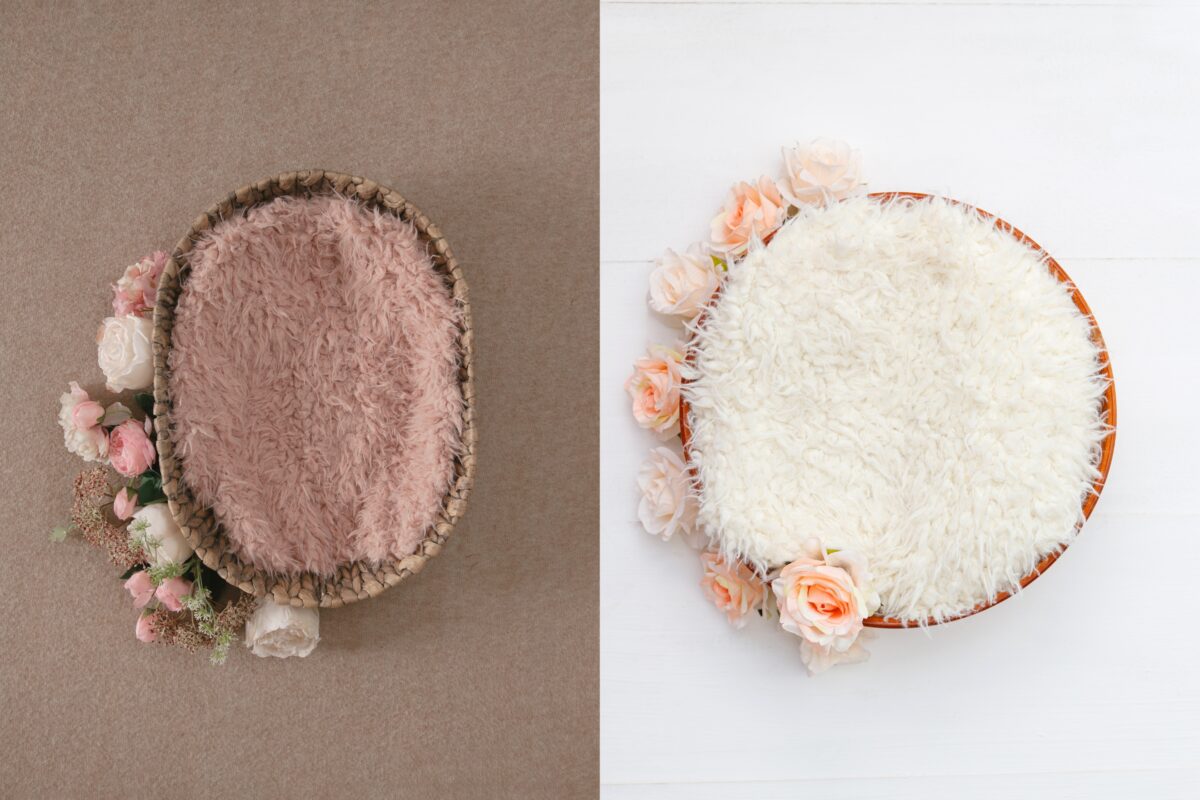
Durability
A key feature of a photography backdrop is its durability. You want to invest in a backdrop that can withstand frequent use and handling, especially if you’re a professional photographer who works on multiple projects.
Common durable materials include canvas, muslin, and vinyl, which can resist tearing and handle regular folding or rolling without losing shape or texture.
Portability
Portability is another important factor to consider when selecting a backdrop.
For on-location shoots, you need backdrops that’re lightweight and easy-to-transport backdrops. Collapsible backgrounds are a great option, as they can fold into a compact size and fit into carrying bags.
Another option is seamless paper rolls as long as you have a suitable carrying solution.
Wrinkle-Free
A wrinkle-free background can save you time and effort during the editing process. Materials like wrinkle-resistant polyester minimize creasing. This ensures professional, seamless results.
Collapsible backdrops, when handled carefully, can also maintain a wrinkle-free appearance.
Washability
Hygiene and cleanliness are important, especially if you frequently photograph family portraits or work with children.
Choosing a washable backdrop material can extend its lifespan and keep it looking fresh. Some materials, like canvas and muslin, are suitable for machine washing. While others, like vinyl, can be easily wiped clean with a damp cloth.
Affordability
As a photographer, choosing a backdrop can also be a balancing act between quality and affordability. Seamless paper and muslin backgrounds usually offer the best value for money, as they’re relatively low cost yet still provide satisfactory results.
While vinyl and canvas materials may be more expensive, they can be a good long-term investment because of their durability and ease of maintenance.
Reusability
Finally, reusability is an important aspect of photography backdrops.
Using your background in multiple photoshoots without showing signs of wear or damage can save you money and time. Materials like canvas, muslin, and vinyl often have high reusability. Because they can be cleaned, maintained, and stored easily without compromising quality.
Types of Photography Backgrounds
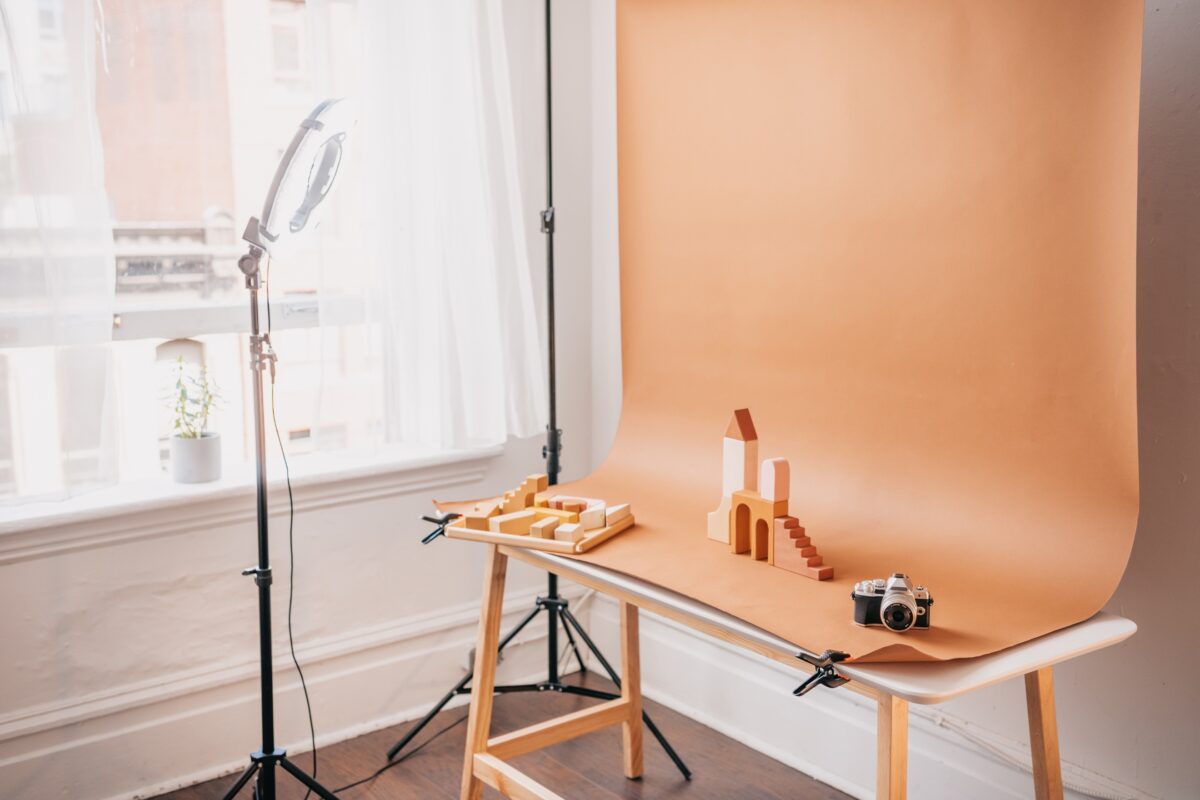
Seamless Paper
Seamless paper backdrops are an affordable and versatile option for photographers.
They come in a wide variety of colors and can be easily replaced if they become damaged or dirty. Seamless paper backdrops provide a clean, non-reflective background perfect for portraits, product photography, and other studio work.
To maximize their functionality, you can hang the paper from a backdrop stand and roll it up or down as needed.
Collapsible Backgrounds
Collapsible backgrounds offer a portable and efficient solution for photographers who need a quick and easy-to-set-up backdrop. They usually consist of a folding frame with a fabric or vinyl surface.
These backgrounds are lightweight and can be easily stored in a carrying case. They’re ideal for on-location shoots and situations where setting up a large backdrop isn’t feasible.
Canvas Backdrops
Canvas backdrops provide a high-quality, durable, textured background for your photography.
They’re usually made of thick cotton or polyester and can be painted or printed with various designs and colors.
And since canvas is relatively heavy, you’ll need a sturdy backdrop stand to support it. When properly cared for, canvas backdrops can last long, making them a worthwhile investment.
Non-Reflective Backdrops
To reduce your photos’ glare and reflections, consider using non-reflective backdrops.
These backdrops are made from materials that help diffuse light, preventing harsh reflections and helping create an even-toned background. Non-reflective backdrops work well for various photography genres, such as headshots, food photography, and still life.
Reversible Backdrops
Reversible backdrops are efficient and cost-effective for photographers who want to maximize their backdrop options. These backdrops feature two colors or patterns on each side, allowing you to switch your background easily.
Properly store your reversible backdrop and protect both sides from dirt and damage when unused.
Chromakey Backdrops
Chromakey backdrops, also known as green screens or blue screens, are specifically designed for video and photography work that involves compositing.
These backdrops are a single, solid color, commonly green or blue, which can be easily removed during post-processing, just what you need to replace the background with digital images or other video footage.
Chromakey backdrops are necessary for videography, special effects, and any photography technique that requires background replacement.
Popular Backdrop Brands
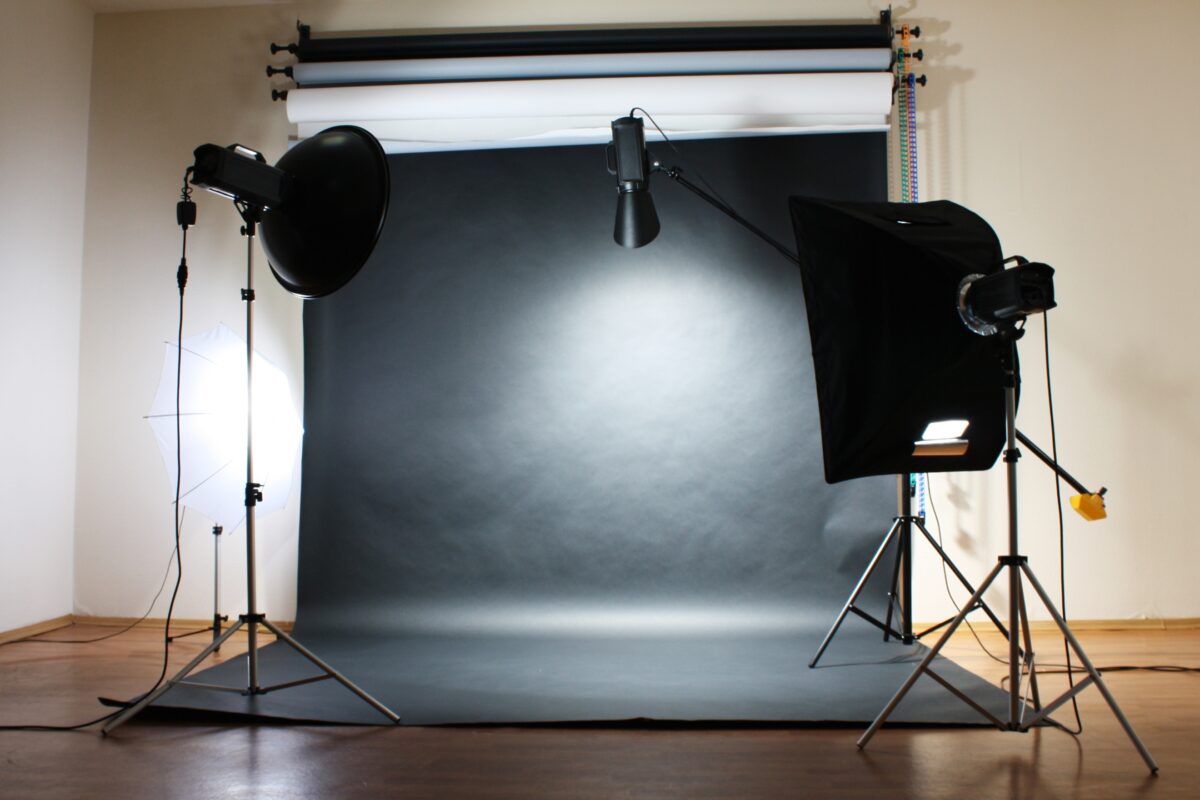
Savage Universal
Savage Universal is a leading brand in the photography backdrop market.
They offer a variety of high-quality backdrops in various materials, such as seamless paper, vinyl, and muslin. The brand is known for its wide range of colors and sizes, making it easy to find the perfect backdrop for your photography needs.
Manfrotto
Manfrotto is another trusted brand that offers photography backdrops for different purposes. The EzyFrame Vintage Background Kit is one of their popular products, providing the photographer with a high-end portable backdrop solution. With Manfrotto, you can expect durable and professional-looking backdrops for your studio.
Westcott
Westcott is a well-known brand offering versatile and innovative photography backdrops. They have many collapsible backdrops, providing quick and hassle-free setups for on-location shoots or studio work. Westcott backdrops are easy to clean, and their collapsible nature makes them highly portable.
Denny Manufacturing
Denny Manufacturing specializes in creating custom photography backdrops and background materials. Their wide selection includes hand-painted muslins, canvas, and printed backdrops designed for various photography styles. Denny Manufacturing allows you to customize your backdrops to meet your unique requirements.
Kate
Kate Backdrop is a popular choice for photographers seeking high-quality, budget-friendly backdrops. Their product line also includes collapsible backdrops. Kate even offers affordable alternatives in muslin and polyester fabric, making it an excellent choice for those looking to expand their backdrop collection without exceeding their budget.
Besides these well-known brands, you may also come across Neewer and Fovitec when searching for backgrounds.
Photography Background Usage
Portrait Photography
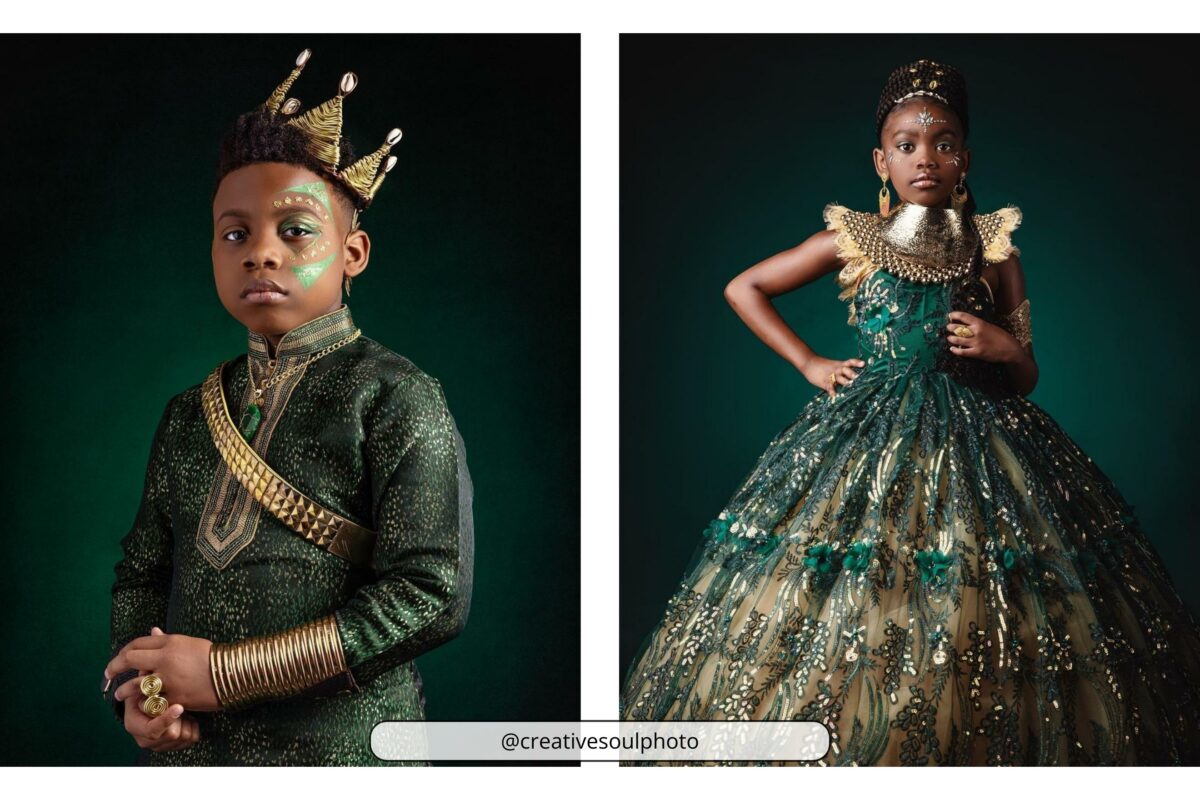
When capturing portraits, your backdrop plays a significant role in creating the desired ambiance. To achieve a classic and timeless look, use a solid color backdrop. Usually in medium or dark shades, such as grey or navy blue. Textured fabrics like muslin can add depth and interest to your portraits without detracting from the subject.
Headshots
For professional headshots, keeping the background simple and uncluttered is essential to focus on the subject. Seamless paper backdrops in neutral shades like white, grey, or beige are commonly used. Ensure proper lighting to eliminate shadows and create a clean, polished look.
Event Photography
When covering events such as weddings, corporate functions, or parties, backdrops can be custom-made to suit the theme or the client’s preferences. Printed backdrops with logos for corporate events or decorative elements like fairy lights or wedding flowers can enhance the overall look. As an event and wedding photographer, you must adapt your backdrops to fit various setup sizes and venue locations.
Product Photography
Product photography should focus on showcasing the product’s features and making it stand out. Look for a seamless white or light-colored backdrop to provide a clean, uncluttered look. You can also use contrasting colors or creative backgrounds for a stylized shoot. And don’t forget to adjust your lighting setup to highlight the product’s details and eliminate shadows.
Fine Art
Fine art photography allows for more creative freedom in choosing your backdrops. For an extraordinary composition, you can explore textured materials, hand-painted designs, or even outdoor locations. Just ensure the background complements the subject, vision, or emotion you’re going for.
Fashion Photography
For fashion photography, the backdrop should spotlight the clothing and models while maintaining a cohesive theme. Seamless paper backdrops in various colors or patterns are great.
If you’re going for a more dramatic effect, consider using special effects like smoke, props, or theatrical lighting in combination with your backdrop.
Seasonal and Occasional Backdrops
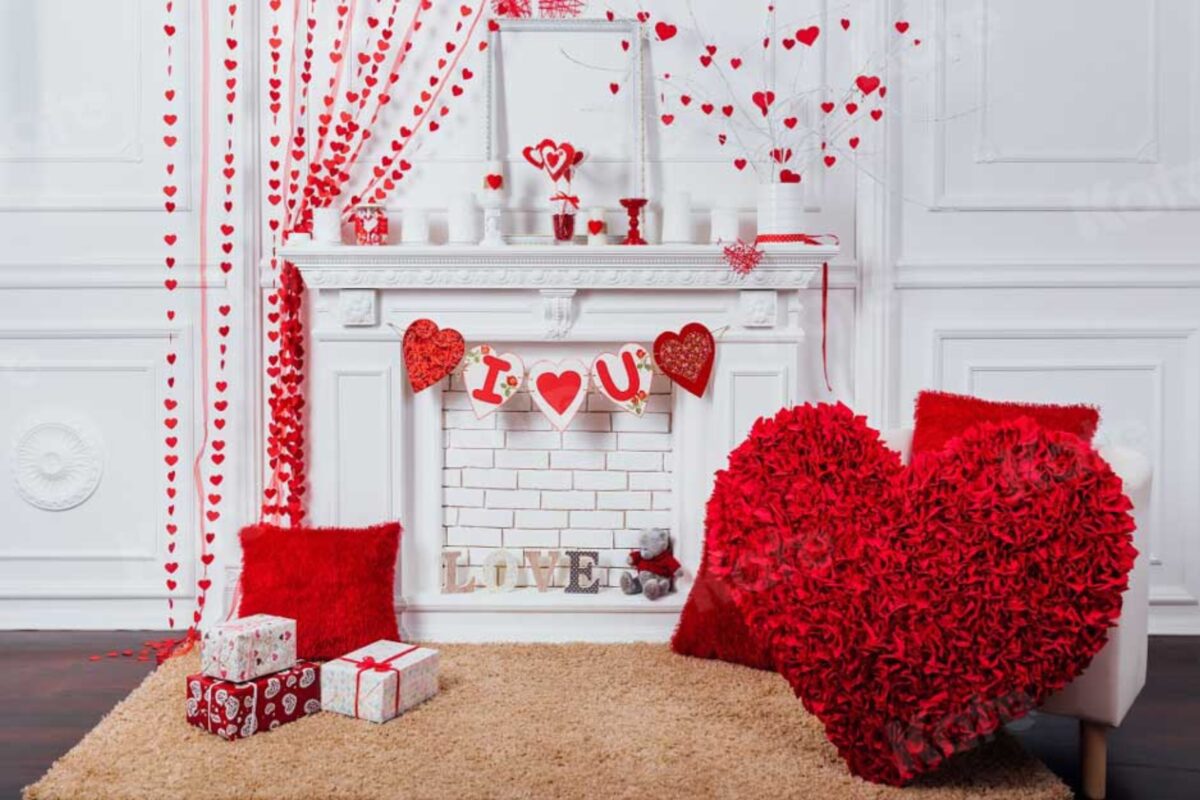
As you gain photography experience, consider investing in various seasonal and occasional backdrops to add to your photography equipment list and portfolio. Here are a few suggestions.
Fall
Embrace the beauty of autumn with fall-themed backdrops for your photoshoot sessions. Photographing the essence of this season, you can opt for backdrops with vibrant foliage, rustic scenes, or pumpkin patches.
Christmas
Christmas is a time for joy and celebration! A festive backdrop will enhance your holiday photoshoots. Options range from winter wonderland scenes to cozy indoor settings with fireplaces and Christmas trees.
Valentine’s Day
Valentine’s Day backdrops can set the mood for love and romance in your photography. Look for heart motifs, warm colors, and soft, dreamy lighting options. Subtle floral patterns or classic wood planks can also enhance the romantic atmosphere.
Spring
Welcome the renewal of spring with backdrops that showcase blooming flowers, green meadows, and softly-lit scenes. Popular options include bright floral print backdrops, cheerful daisies, or a rustic boutique setup.
Cake Smash Sessions
For those memorable cake smash sessions, colorful and fun backdrops add to the excitement of your photos. Go for vibrant patterns, balloon designs, or creative themes that make these moments special.
Tips for Selecting The Best Photography Backdrop for Your Photoshoot
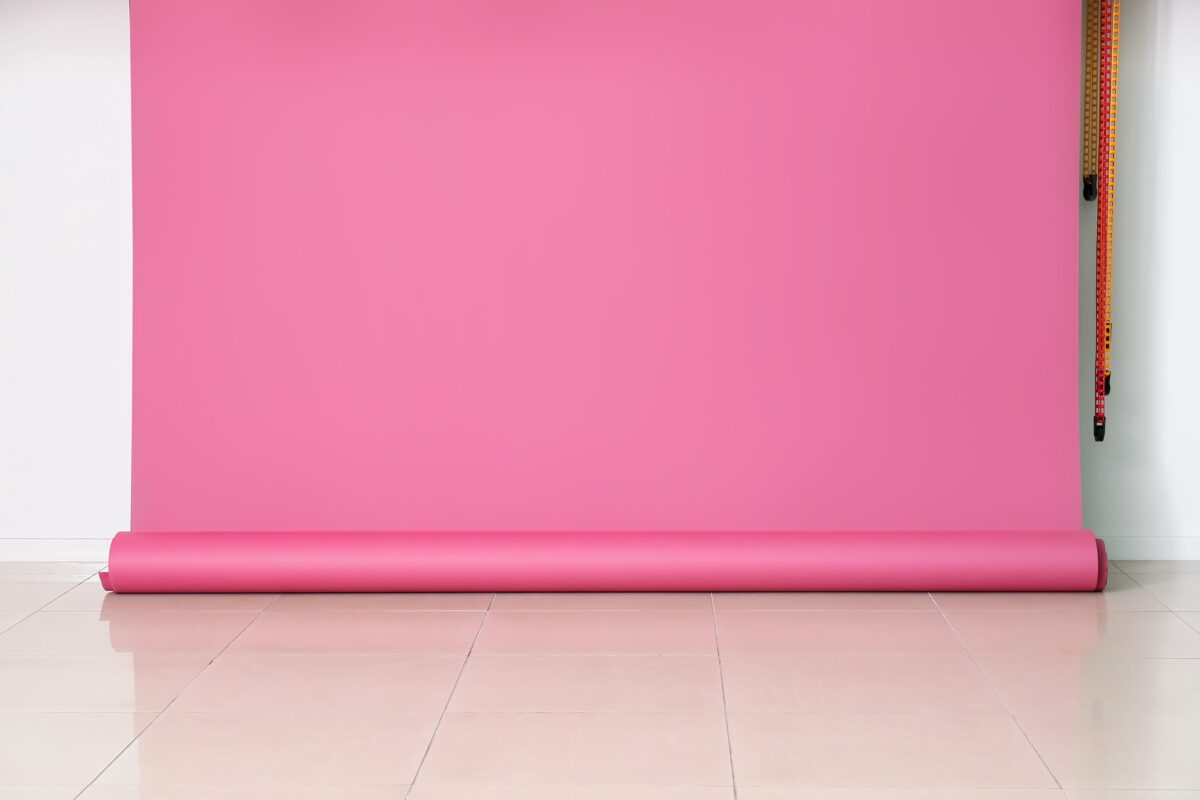
Here are some tips to help you decide when selecting a backdrop for your needs.
1. Choice of Colors: Consider coordinating the colors in the background and the foreground to make your subject stand out and complement it. Opt for a background color or pattern that highlights the subject without detracting from their look. Remember, you can produce gray from a white backdrop by altering your lighting setup, so a dedicated gray backdrop might not be needed.
2. High-Quality: Select a high-quality backdrop that won’t easily tear or damage. This will guarantee your investment lasts for multiple shoots while helping you maintain a professional appearance.
3. Versatile: Choose a backdrop that can easily adapt to various situations, like seamless paper. Seamless paper backdrops are available in many colors. They’re also inexpensive and a staple for many photographers and studios.
4. Lightweight: Select a lightweight and portable backdrop. This will make transport and setup at different photoshoot locations easy. A lightweight backdrop is especially important if you’re a photographer who frequently shoots on-location or changes sets.
5. Easy to Use: Look for a backdrop with a rod pocket for easy mounting on a backdrop stand. This helps you quickly set or replace the backdrops during your sessions and keeps the background tight, reducing wrinkles.
6. Get Recommendations: Seek recommendations from fellow photographers, online forums, tutorials, or read reviews to get an idea of different backdrops on the market.
Photographers with hands-on experience can provide you with valuable information. Information you can then use to find the perfect backdrop. One that’ll fit your needs.
Care and Maintenance Tips for Your Backdrop
Taking care of your photography backdrop is mandatory to maintain its quality and extend its lifespan. Here are some practical tips to effectively clean and store your photography backdrops:
Handling Stains and Dirt
If your backdrop gets dirty or stained, use a damp cloth with mild soap and water to gently clean the affected area. Be sure not to scrub too hard, as you might damage the surface. You can also use a lint roller or handheld vacuum to remove dust and hair.
Wrinkles and Folds
You should hang your backdrops and use a handheld steamer to eliminate wrinkles and folds. Ensure you maintain a safe distance and use the lowest possible temperature setting. Also, avoid ironing your backdrop, as the heat may damage the surface.
Proper Storage
To store your backdrops, keep them rolled up to prevent creasing and place them in a protective box or bag. This will help maintain their shape and protect them from dust and moisture.
Using the Right Equipment
Use dedicated tapes or professional clamps to hang and fix your backdrops because common tapes or clamps may cause harm. Stands and clamps are needed to prevent damage and ensure your backdrop remains in good condition throughout its usage and lifespan.
Frequently Asked Questions About Backdrops
What are the best materials for photography backdrops?
There are several materials that photographers commonly use for their backdrops. These include paper, vinyl, muslin, and microfiber. Each material has its advantages:
Paper: Easy to use, affordable, and disposable. But it’s susceptible to damage and can’t be washed.
Vinyl: Durable, easy to clean, and available in various finishes. But, it can be heavy, and larger backdrops may be difficult to transport.
Muslin: Lightweight, portable, and available in many colors and patterns. However, it may wrinkle easily and require ironing or steaming before use.
Microfiber: Inexpensive, easy to use, and capable of high-quality prints. Microfiber has gained popularity in recent years for its impressive versatility.
How can I create a budget-friendly backdrop?
If you’re on a tight budget, several DIY options exist where you can create an affordable backdrop. Some ideas include:
Use a bedsheet in a solid color or pattern that suits your needs.
Painting a large piece of plywood or canvas in your desired color or design.
Hanging curtains or fabric from a backdrop stand or a clothing rack.
Using a collapsible reflector as a simple backdrop for headshots or small subjects.
Note: Iron or steam any fabric backdrops to remove wrinkles before using them.
Where can I purchase quality photography backdrops online?
There are many online retailers and marketplaces where you can buy quality photography backdrops. Some popular options include:
Amazon: Offers a wide range of backdrops and backgrounds at various price points.
B&H Photo Video: A respected retailer with an extensive selection of backdrop materials and sizes.
Adorama: Another trusted source for photo gear, including various backdrop options.
Etsy: A marketplace with various handmade and custom-designed backdrops by individual sellers.
How do I set up a photography backdrop kit?
To set up a photography backdrop kit, follow these steps:
Assemble the backdrop stand according to the manufacturer’s instructions, adjusting the width and height as needed.
Position the stand where you want your backdrop to be, ensuring it’s level and stable.
Unroll or unfold the backdrop, carefully removing any creases or wrinkles.
Attach the backdrop to the stand with clips or slide it onto the crossbar if it has a pole pocket.
Adjust the stand and backdrop to ensure it’s properly aligned and stretched.
Set up your lights and modifiers as needed. Try not to cast any unwanted shadows on the backdrop.
What are some tips for choosing the right size backdrop?
When selecting a backdrop size, consider the following factors:
The size of your studio or shooting space: Check the backdrop dimensions to see if it fits comfortably within your workspace, leaving enough room for lights and other equipment.
The size and type of your photo subjects: If you photograph large groups or full-length portraits, you’ll need a wider and taller backdrop.
The desired framing and composition: A larger backdrop allows for more flexibility in framing, and a smaller one is fine for tight headshots or product photography.
Choose a backdrop size based on your specific needs and expectations. Just remember to measure your space beforehand to ensure it’ll fit.
